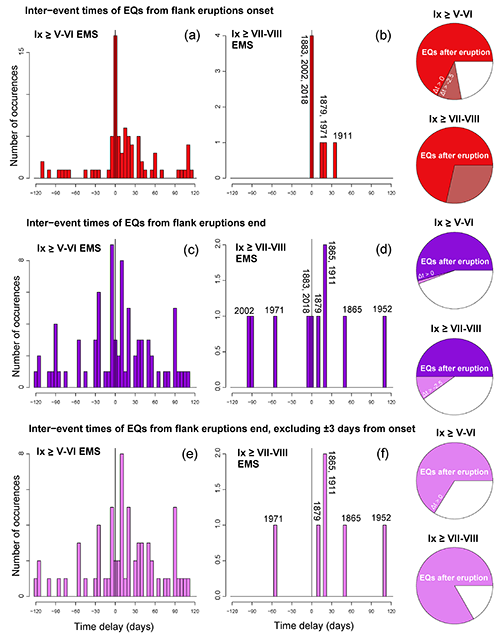Quantifying the Statistical Relationships Between Flank Eruptions and Major Earthquakes at Mt. Etna Volcano (Italy)

Bevilacqua A., R. Azzaro, S. Branca, S. D’Amico, F. Flandoli, A. Neri.
Journal of Geophysical Research: Solid Earth, 127, https://doi.org/10.1029/2022JB024145
Abstract
At Mt. Etna volcano, flank eruptions are often accompanied by seismic swarms with damaging earthquakes; the most recent case-history is the 2018 flank eruption, associated with a destructive earthquake (Mw 5.0). In this paper, we analyze the earthquake and eruptive catalogs from 1800 to 2018, to produce quantitative estimates of the earthquake rate under the influence of flank eruptions. We quantify that 30% of the flank eruption onsets precede a major (i.e., damaging, Ix ≥ V–VI EMS) earthquake by 30 days or less; 18% of the major earthquakes follow a flank eruption onset in 30 days or less. Thus, we show that the probability of major earthquakes increases 5–10 times after the onset of flank eruptions and this effect lasts for 30–45 days. This is also observed after the end of the eruptions. Results indicate different relationships depending on the location of the volcano-tectonic systems considered individually (eruptive fissures, seismogenic faults). For instance, we describe a 10–20 times increased probability of earthquakes for 65–70 days after eruptions on the northeastern flank, and of new flank eruptions for 45–70 days after earthquakes of the Pernicana fault.


Devi effettuare l'accesso per postare un commento.